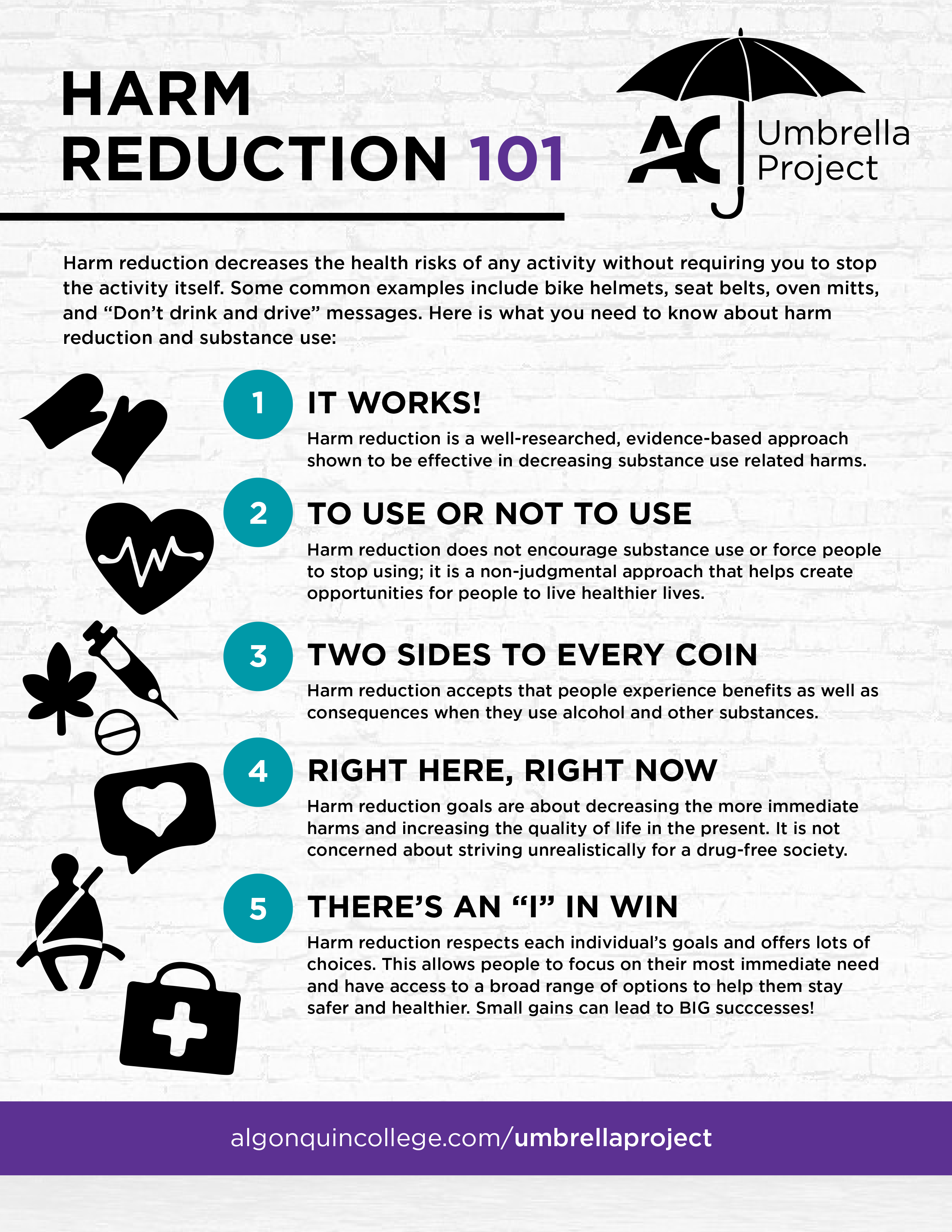Harm Reduction as Best Practice
Harm reduction is focused on minimizing consequences without needing the activity to stop. Harm reduction is a well-researched, evidence-based approach shown to be effective in addressing substance related harms (minimizing death, disease, and injury). Harm reduction is the only global drug policy response that has proven to save lives and money at the same time as increasing quality of life (Stone & Sander, 2016).
Society actively embraces harm reduction in other areas where there is high risk for death and injury. For example:
Seat belts, air bags, helmets for bicyclists and motorcyclists are all examples of measures taken to reduce the severity of injuries in the event of collision or upset. These measures neither prevent crashes nor attempt to reduce the high-risk behaviours that lead to negative events. Once again, the primary goal is simply to reduce the likelihood and severity of injury. Not only have such measures proven effective and garnered widespread support, in many jurisdictions they have become legal requirements (National Treatment Strategy Working Group, 2008).
In this context, harm reduction refers to an umbrella term for policies and practices focused on reducing problematic effects of alcohol and other drug use (Erickson, Butters, & Walko, 2002). Harm reduction can take place on the individual, community, or societal level. Examples of familiar substance use harm reduction strategies include: Smart Serve for bartenders, which decreases the potential for public drunkenness and DUIs; needle exchange programs that reduce HIV transmission; no-smoking zones to limit second-hand exposure to smoke (Erickson, Butters, & Walko, 2002). It is a non-judgmental approach that opens up honest dialogue around drug (including alcohol) use and decreases stigma around those whose substance use has become problematic.
Key principles include:
- Acceptance that there are benefits and consequences of alcohol and other drug use, and that use has been around for thousands of years.
- Focus on decreasing more immediate harms vs. striving for a drug free society.
- Focus is on harms not the substance.
- Giving people choice and access to a broad range of options that help to keep people safe and alive and healthy.
- Making an individual’s goals a priority and focusing on what they see is their most immediate need.
- Small gains add up over time.
- Recognizing that people know what is best for them and are doing the best they can with what they have.

| Myths | Facts |
|---|---|
| Harm reduction is opposed to abstinence and therefore conflicts with traditional substance abuse treatment. | Harm reduction is not at odds with abstinence; instead, harm reduction includes it as one possible goal across a continuum of possibilities that include safe use and managed use. |
| Harm reduction encourages drug use. | Harm reduction is neither for, nor against, drug use. It does not seek to stop drug use, unless individuals make that their goal. Harm reduction focuses on supporting people’s efforts to reduce the harms created by drug use or other risky behaviours. Numerous studies have demonstrated that harm reduction programs neither increase substance use, nor do they increase the number of new users. Some studies have shown that harm reduction programs actually increase exposure to treatment options. |
| Harm reduction takes money away from other programs. | In Canada, the trend has been that the vast majority of funds go toward enforcing the current drug laws. Only a small fraction (~2%) goes toward harm reduction programs or services. |
| By making condoms or safer drug use equipment available at program sites, programs will undermine policies that state that clients cannot have sex or use drugs on the premises. | Making harm reduction equipment and information readily available shows commitment to the health of the overall community. It demonstrates that you value individuals’ health and well-being, and creates opportunities to have open and honest conversations about varying levels of risks associated with these practices. There is no evidence that making these tools available leads to an increase in the level of these activities either inside or outside programs. (Superior Points Harm Reduction Program) |
Another way of looking at harm reduction is as secondary prevention. Primary prevention focuses on preventing the high risk behaviour or disease in the first place, secondary prevention focuses “on early detection and preventing progression and threats to the health of the individual” (National Treatment Strategy Working Group, 2008). In the case of post-secondary students, reducing the harms they may experience from the use of alcohol and other drugs, and identifying problematic use before it progresses into an addiction would be examples of secondary prevention.